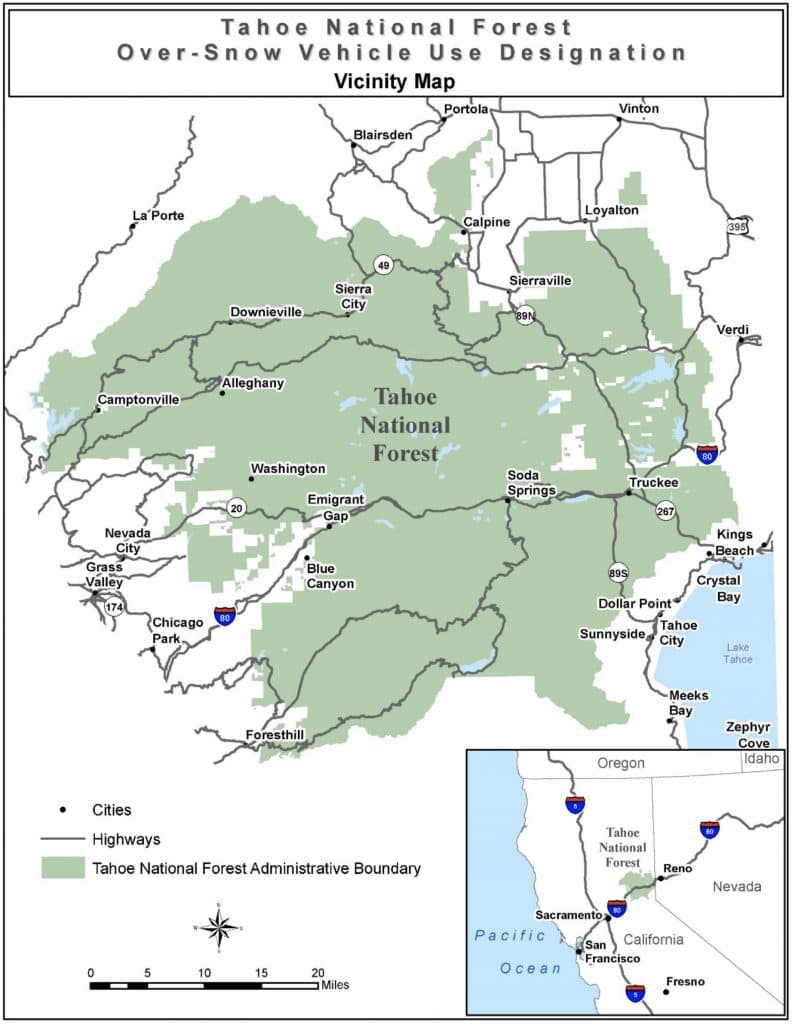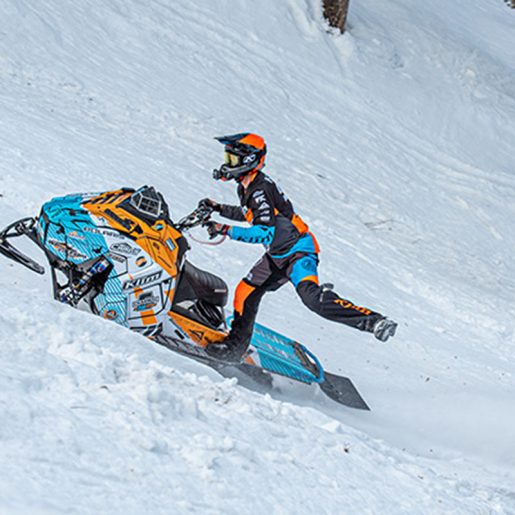National Forest Land Use Review Impacts Tahoe Area Snowmobile Zones
Land use management in five California National Forests is under review, and the result will potentially dramatically impact the amount of land available for snowmobiling. The review impacts Tahoe snowmobiling areas along with those in Lassen, Plumas, Eldorado and Stanislaus National Forests which are also under review.
Yuba Gap, Donner Summit, Yuba Pass, Little Truckee Summit, Bassett’s, and China Wall in the Tahoe National Forest stand to be affected. Most winter users—including motorized and non-motorized—set out from these six designated winter trailheads according to the Forest Service.

Images from Draft Environmental Impact Statement Volume I.
National Forest Land Use Review Impacts Tahoe Snowmobile Zones
The review is partly the result of two separate lawsuits brought about by three groups: Winter Wildlands Alliance, Snowlands Network, and the Center for Biological Diversity. The first two are organizations that promote non-motorized winter recreation. The result of the successful lawsuits required the National Forests to conduct an environmental impact study and to formally manage their snowmobile recreation under a winter travel management process. The results of the review will ultimately affect the legal access and use of snowmobiles in the National Forests.
Proposed Alternatives
In the case of the Tahoe National Forest, there are five proposed alternatives. The first of these would be to continue the current management plan as-is. The other options very considerably. At one end of the spectrum, the motorized-recreational opportunities are marginally increased, with slightly more area and trails available. At the opposite end, the area available for motorized-recreation would be reduced by more than half—a 57% decrease from what’s currently available. The other two options are somewhere in the middle—compromises that reduce motorized-use area to a lesser degree in order to emphasize wildlife/natural resources and accommodate non-motorized users.
“High Quality” Snowmobile Opportunities
Although the total area available for use by snowmobilers is the largest consideration, there is more to consider. Much of what is currently open to snowmobiling is not considered to be high-quality snowmobile area. As snowmobilers we all know theses areas—the ones that are too steep, or low elevation or in which the forest is too dense for enjoyable use. Fortunately, a closer look at these alternatives indicates a less drastic impact on the majority of riding we do.
In the case of “Alternative 2” for example, while there shows a dramatic 36% decrease of usable area from the current plan, there is only a 10% decrease in what is considered “high quality” snowmobile opportunities. However, what is considered “high quality OSV use” by the Forest Service may not necessarily be the most accurate assessment if you ask a snowmobiler.

Maps which show the proposed Over-Snow Vehicle (OSV) use in the Tahoe National Forest can be found here for Alternatives 1-3, and here for Alternatives 4 & 5.
A video produced by snowmobilers rallying to protect their riding areas shows the impact of the various alternative proposals on a map. The group is using the hashtag #savetahoesnowmobiling to rally support for the cause.
In addition to total area, another key factor under consideration is a minimum snow depth requirement for snowmobile use. Currently there is no minimum depth required. However, all four other alternative proposals list a minimum snow depth for trail and other use. While obvious that there must be some snow on the ground for snowmobile use, it’s not totally clear how a required minimum snow depth may affect spring access for snowmobiles in cases where some sections of a trail can melt out earlier than others. This could potentially cut the spring riding season short in some cases.
User Group Conflict is a Common and Complex Issue
What is currently under review in the National Forests is a complex issue of many factors, not the least of which are the demands of different user groups. This is a common source of conflict throughout North America. Certainly, all user groups must have access to the type of recreation of their choice, and this applies to snowmobiling no less than any other group.
For more information, the Tahoe National Forest Over-snow Vehicle Use Designation Draft Environmental Impact Statement can be found here.
Information may also be obtained by contacting:
Joe Chavez, Forest Trails and Recreation Specialist
631 Coyote Street
Nevada City, CA 95959
Phone: (530) 478-6158
To voice your opinion on the proposed land-use alternatives, you may submit a comment form here, or email: tahoe_nf_comments@fs.fed.us with the subject line, “Comments on Tahoe NF OSV Designation.”
— MS





